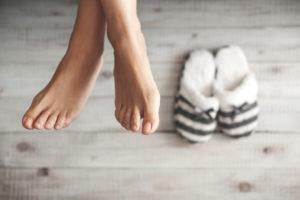News came recently from the University of Exeter Medical School about the discovery of a healing molecule that could reduce the risk of amputations for people with diabetes. The molecule, which is part of the body’s tissue repair system, could help to treat non-healing wounds and injuries, such as occur in some people with diabetes. A study led by the universities of Exeter and Bath, and published in the journal Antioxidants and Redox Signalling has made great strides in understanding how the molecule deoxyribose-1-phosphate stimulates the formation of new blood vessels. Dr Giordano Pula, of the University of Exeter Medical School, led the team. He said: “We’re very excited to provide new insights into how this crucial molecule works to stimulate the formation of blood vessels in people. We now hope to be able to use this knowledge to trigger the formation of new blood vessels in patients.”
Dr Kotryna Temcinaite, Research Communications Officer, at Diabetes UK commented on this news saying, “It’s really important that we find new treatments for foot problems in people with diabetes, as doing so could help prevent debilitating, devastating and costly amputations. This study helps us better understand how wounds heal, and could help the development of new treatments for diabetes foot problems in the future.”

Diabetes UK has released a new video about how to look after your feet, which you can watch here: http://bit.ly/DUK_footcare
Over at IDDT, the charity has also produced a booklet called Diabetes – Looking After Your Feet, designed to help people to know what to look for and when to seek treatment to keep your feet healthy and avoid foot ulcers. The charity feels that, as there is a shortage of podiatrists in the NHS and that the recommended annual diabetes foot health checks, are not always taking place as they should. Commenting, IDDT’s Jenny Hirst says, “we hope that if people have more information on how to look after their feet, the number of amputations will reduce.” To get a free copy of the booklet telephone 01604-622837 or email jenny@iddtinternational.org
Meanwhile a new product has become available for home use. Neuropad is simple to use and can indicate if there are changes in foot-health, indicating that you should seek advice from a healthcare professional. www.neuropad.co.uk
 Top tips for healthy winter feet
Top tips for healthy winter feet
We hide our feet away in winter and foot care can often be forgotten. But the cold, wet, icy, snowy weather can have an adverse effect on your feet, so here are some ideas to keep your toes in tip-top condition, from Dr. Foot.
1. Shoes: Ideally you should purchase some good quality winter shoes. If you’re going to be out and about then it would be good idea to make sure your shoes are waterproof. When purchasing your winter shoes allow for some extra room for thicker socks. To prevent slips and falls it is essential that the shoes have adequate grip.
2. Socks: The best way to deal with cold feet is to prevent heat loss by keeping the feet warm and dry. The wearing of natural fiber socks (e.g. wool) is advisable. If you suffer from cold sweaty feet then you could wear a thin synthetic sock to absorb moisture to a thicker outer sock.
3. Pretend you’re in sandals! When we wear sandals we make an effort to make sure our feet are looking pretty. In the winter months we hide them away and pay little attention to them. Feet will dry out in the winter, which can lead to cracks and peeling of the skin. Keep your feet moisturized especially around your heels. Make sure your nails are trimmed and are neat and tidy.
4. Walk softly: The cold weather can lead to slippery and potentially dangerous pavements and roads. Even with a good shoe with adequate grip it is advisable to walk softly and not to make any sudden movements. Ankle sprains and ligament tears are common during winter months.
5. Beware of chilblains! Chilblains are small, itchy, painful lumps that develop on the skin. They develop as an abnormal response to cold. They usually go away over 7-14 days. If you are prone to develop chilblains then you should keep warm in cold weather and avoid excessive exposure to the elements.
Tips from: www.drfoot.co.uk
News items and features like this appear in the Desang Diabetes Magazine, our free-to-receive digital journal. We cover diabetes news, diabetes management equipment (diabetes ‘kit’ such as insulin pumps and continuous glucose monitoring equipment) and news about food suitable for a diabetic diet including a regular Making Carbs Count column. Go to the top of this page to sign up – we just need your email address. www.desang-magazine.co.uk




